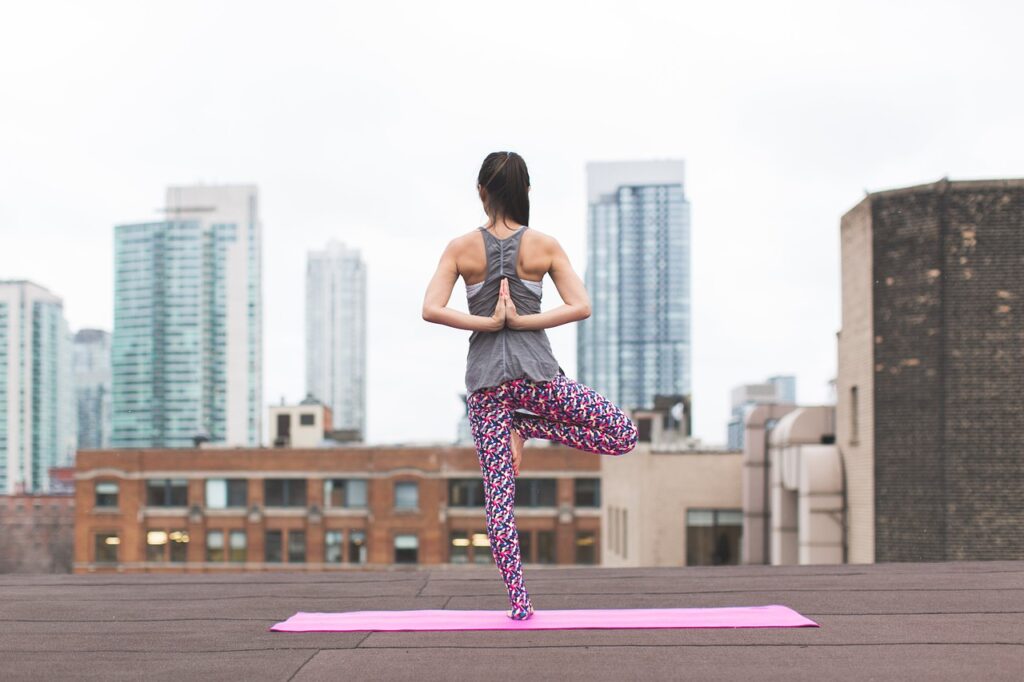Evidence Based
This article relies on solid scientific evidence, authored by experts, and thoroughly fact-checked by specialists.
Our team of licensed nutritionists and dietitians strives to maintain objectivity, impartiality, and honesty. We aim to present a fair representation of both sides of the argument.
Scientific references are included throughout this article. The numbers in parentheses (1, 2, 3) are clickable links to peer-reviewed scientific papers. These sources further support the information provided.

Do you struggle with getting a good night’s sleep? While there are many factors that can impact sleep quality, one important aspect to consider is temperature. The temperature of your bedroom can have a significant impact on your ability to fall asleep and stay asleep.
The Science
The relationship between temperature and sleep is rooted in the body’s natural circadian rhythm, which regulates the sleep-wake cycle. This decrease in body temperature helps to promote drowsiness and prepare the body for sleep. As we approach bedtime, the body naturally begins to cool down, with core body temperature decreasing by about 1 to 2 degrees Fahrenheit (or 0.5 to 1 degree Celsius). (1
PubMed Central
Highly respected database from the National Institutes of Health
Go to source )
When we sleep, our body temperature continues to decrease, reaching its lowest point in the early morning hours before we wake up. This decrease in body temperature is thought to be important for the restorative functions of sleep, such as tissue repair, immune system function, and memory consolidation.
However, if the bedroom temperature is too high, it can interfere with this natural decrease in body temperature and make it more difficult to fall asleep. Additionally, being too hot during the night can cause you to wake up frequently, leading to a disrupted sleep cycle and a decreased quality of sleep.
On the other hand, if the bedroom temperature is too low, it can also interfere with sleep quality. Extremely cold temperatures can cause discomfort and lead to shivering, which can also disrupt sleep.
By optimizing the temperature of your bedroom to the ideal range of 60 to 67 degrees Fahrenheit (or 15.5 to 19.5 degrees Celsius), you can promote the natural decrease in body temperature that occurs during sleep, leading to better sleep quality and improved overall health and well-being.
For Babies
Temperature is especially important for babies and young children, who may have more difficulty regulating their body temperature and may be more sensitive to changes in temperature. According to the American Academy of Pediatrics, the ideal temperature for a baby’s room is between 68 and 72 degrees Fahrenheit (or 20 to 22 degrees Celsius).
Keeping a consistent and comfortable temperature in a baby’s room can help to promote better sleep and reduce the risk of sudden infant death syndrome (SIDS). Additionally, it is important to avoid overheating babies, as this can increase the risk of SIDS. Dress your baby in light clothing and use lightweight blankets in warm weather, and use warmer clothing and blankets in cooler weather.
If you are unsure about the temperature of your baby’s room, you can use a room thermometer to monitor the temperature. It is also important to make sure that your baby’s sleeping environment is safe and free from hazards, such as loose bedding or soft toys.
By paying attention to the temperature of your baby’s room and creating a safe and comfortable sleeping environment, you can help to promote better sleep and reduce the risk of SIDS. If you have concerns about your baby’s sleep or sleeping environment, talk to your pediatrician for guidance and support.
The Goldilocks Zone of Bedroom Temperature
If your bedroom is too hot, it can cause you to wake up frequently and lead to a disrupted sleep cycle. This is because being too hot can increase your heart rate and make it more difficult for your body to relax and enter the deeper stages of sleep. Additionally, sweating during the night can cause discomfort and make it more difficult to fall back asleep.
On the other hand, if your bedroom is too cold, it can cause discomfort and lead to shivering, which can also disrupt sleep. Being too cold can cause your body to work harder to maintain its temperature, leading to a higher metabolic rate and increased wakefulness.
To find the Goldilocks zone of bedroom temperature, it’s important to experiment with different temperatures and pay attention to your body’s cues. If you find that you are waking up frequently during the night or feeling uncomfortable, adjust the temperature accordingly.
In addition to adjusting the temperature of your bedroom, it’s important to create a comfortable and relaxing sleep environment by reducing noise and light, and using comfortable bedding and pillows. By creating a restful sleeping environment and finding the ideal temperature for your comfort, you can promote better sleep and improve your overall health and well-being.
Other Sleep Tips
While optimizing the temperature of your bedroom is an important factor in promoting better sleep, there are many other strategies you can use to improve your sleep quality. Here are a few additional tips:
- Stick to a sleep schedule: Going to bed and waking up at the same time every day can help regulate your body’s circadian rhythm, which can improve sleep quality. Aim to get 7-9 hours of sleep per night. If you have trouble falling asleep at night, try establishing a relaxing bedtime routine to signal to your body that it’s time for sleep. Additionally, avoid napping during the day, as this can interfere with your ability to fall asleep at night.
- Create a relaxing bedtime routine: Doing calming activities before bed can help to reduce stress and anxiety, which can interfere with sleep quality. Experiment with different activities, such as taking a warm bath, reading a book, or listening to calming music, to find what works best for you. It’s also important to avoid stimulating activities before bed, such as using electronic devices or watching TV, as the blue light emitted by these devices can disrupt your body’s natural sleep-wake cycle.
- Limit caffeine and alcohol: Caffeine and alcohol can interfere with sleep quality, so it’s important to limit your consumption, especially in the hours leading up to bedtime. Caffeine is a stimulant that can interfere with sleep for up to 12 hours, so it’s best to avoid caffeine after noon. Alcohol, while initially sedating, can disrupt sleep later in the night, leading to more awakenings and less restorative sleep.
- Exercise regularly: Regular exercise can help to improve sleep quality, but it’s important to avoid exercising too close to bedtime, as this can interfere with sleep. Aim to get at least 30 minutes of moderate-intensity exercise most days of the week. Exercise can help to reduce stress and anxiety, which can improve sleep quality. However, exercising too close to bedtime can increase your heart rate and body temperature, making it more difficult to fall asleep.
- Create a comfortable sleep environment: Make sure your bedroom is cool, dark, quiet, and free from distractions. Use comfortable bedding, pillows, and pajamas to create a cozy and relaxing sleep environment. If you live in a noisy area or have trouble sleeping due to external noises, consider using a white noise machine or earplugs to block out distractions. Additionally, consider investing in a comfortable mattress and pillows that provide adequate support for your body.
The Bottom Line
Getting adequate and good quality sleep is essential for overall health and well-being. Optimizing the temperature of your bedroom, sticking to a sleep schedule, creating a relaxing bedtime routine, limiting caffeine and alcohol, exercising regularly, and creating a comfortable sleep environment are all strategies that can help to improve sleep quality. It’s important to prioritize sleep and make it a priority in your life. If you continue to struggle with sleep issues, talk to your healthcare provider for guidance and support. By incorporating these strategies into your sleep routine and making sleep a priority, you can improve your sleep quality and overall health and well-being.
How we reviewed this article:
HISTORY
Our experts continually monitor the health and wellness space, and we update our articles when new information becomes available.




